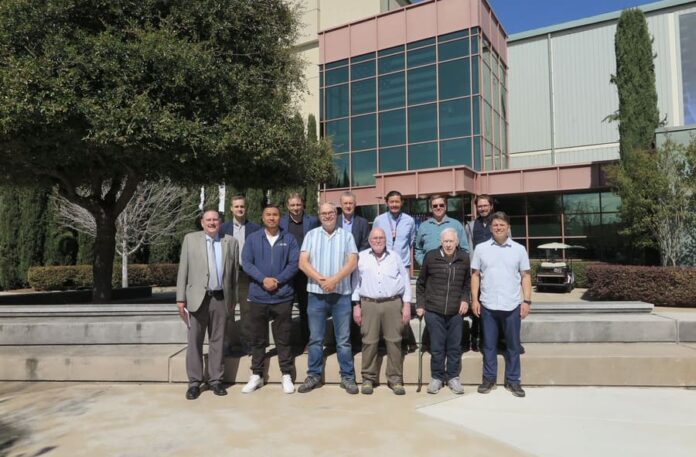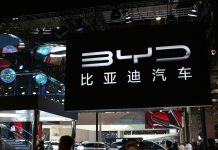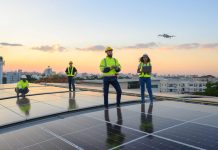When Christo Liebenberg first took an interest in the CRISLA (Condensation Repression Isotope Selective Laser Activation) process of laser enrichment of uranium, he knew it had great potential. After assessing its techno-economic viability, he first co-founded CRISLA Inc. in 2020, which later became LIS Technologies Inc. with inventor Jeff Eerkens. Later on, notable advanced nuclear technology entrepreneur Jay Yu joined Christo and Jeff in pursuit to rebirth the only U.S.-origin and patented technology for laser uranium enrichment. Together, they envision their company will ultimately lead the United States toward nuclear self-sufficiency.
In layman’s terms, CRISLA is a technology that uses much less complex laser architectures than previous laser enrichment technologies. Scaling issues for these legacy enrichment technologies have been a showstopper over the last 50+ years, attempted by 25+ different countries. What also sets CRISLA apart is that it’s currently the only US-origin laser enrichment technology under development in the USA, opening up “unobligated” opportunities that competitive technologies would not qualify for.
Nuclear fuel with a higher enrichment level is much more efficient, and CRISLA makes the complex task of enriching uranium faster, cheaper, and more scalable than before. The result? With CRISLA, the United States can tap into a reliable supply of nuclear fuel for a new age in nuclear energy.
Liebenberg explains that his company did not invent the process — it’s merely resurrecting it. Its inventor is Dr Jeff Eerkens, now 93 years old, who is considered the “father of laser enrichment.” He says, “The CRISLA process was successfully demonstrated in the early ‘90s, but further development was shelved due to Russia dumping enriched uranium on the world markets at less than half the market price.”
“This event also collapsed the entire U.S. nuclear industry, and we became dependent on imported Russian nuclear fuel,” Liebenberg continues.
However, relatively recent geopolitics prompted a shift that has since brought CRISLA back into the domestic nuclear energy conversation.
“After the Russian invasion into Ukraine in 2022, the United States eventually passed into law banning imports of Russian enriched uranium. Now, the United States is pouring billions of dollars to help resurrect and supercharge the domestic nuclear industry,” Liebenberg says.
To understand why CRISLA is so critical to the success of the United States nuclear industry, you first need to understand the difference between low-enriched uranium (LEU) and high-assay low-enriched uranium (HALEU).
Both fuel types contain uranium-235, which is the fissile uranium isotope needed to generate nuclear energy. Natural uranium contains 0.711% of uranium-235, LEU contains up to 5%, and HALEU holds between 5 and 20%. Fuel with a higher percentage of the uranium-235 isotope is more efficient and allows for smaller or more compact nuclear reactors, such as small modular reactors (SMRs).
Older nuclear reactors, such as the typical civilian nuclear reactors, depend on LEU. However, SMRs and other newer, more efficient nuclear technologies, like microreactors, need HALEU — and so does the next generation of nuclear power plants. Reactor companies and nuclear power plants don’t generally make their own fuel — they rely on enrichment services from businesses like LIS Technologies.
“We plan to distribute to small modular reactor companies or nuclear utilities,” Liebenberg says. “The big utility companies might buy your entire annual production, and they will distribute that to the nuclear power plants.”
Many critics of nuclear power are concerned about the impact of radioactive materials. While the risk can’t be eliminated completely, Liebenberg notes that the CRISLA method of HALEU production can drastically reduce environmental impact.
“By producing higher-assay fuel, such as HALEU, this technology could extend the lifespan of advanced reactors and reduce the frequency of fuel replacement, minimizing the overall environmental impact of nuclear power,” he says.
“And because laser excitation is very selective, it can more effectively strip uranium-235 from the feed material, better than conventional centrifugation methods can do, which means the tails or waste byproducts also have a reduced environmental impact,” Liebenberg continued.
LEU and HALEU are central to ending reliance on foreign fuel, and LIS Technologies intends to make it possible to create HALEU in a fraction of the time. Its high throughput is vital to the economies of scale of the CRISLA process.
“The CRISLA process can create HALEU in only two stages,” says Liebenberg. “The first stage is enriching from natural uranium (0.711%) to LEU (~4%), and the second stage is enriching from LEU to HALEU (19.75%). Compare this to older centrifuge technology that needs hundreds of stages from natural to LEU to HALEU at comparable throughput.”
LIS Technologies doesn’t only make HALEU production efficient in terms of time — the Company believes it’s also much more cost-effective than centrifuge enrichment and competitive laser enrichment technologies.
“This technology reduces the costs by using far less moving parts, such as mechanical components and active optical components, in its architecture,” Liebenberg explains. “Each component has a reliability factor, and by reducing the number of components such as laser amplifiers, wavelength conversion stages, and multiplexing systems, the overall reliability is much better when using the CRISLA technology.”
He continues, “Fewer components, higher reliability, and higher overall efficiency all contribute to keeping the overall cost lower compared to any other enrichment technology.”
The idea of U.S.-produced nuclear fuel might be new for many. But for Liebenberg, it’s the realization of a decades-long dream. “I have been part of this industry since 1987 and I decided to take a different direction. Since 2014, I’ve been working with Jeff W. Eerkens on 5um CRISLA laser architecture,” he says. “Then, in 2020, we started looking for funding, and the rest is history.”
Jay Yu, the founder and chairman of Nano Nuclear Energy (Nasdaq: NNE), has now joined LIS Technologies. “Jay brings a wealth of company building and capital market expertise to LIS Technologies, which is now poised for success.”
While other laser uranium enrichment technologies and CRISLA are hardly new concepts to Liebenberg and the rest of the company, he realizes that, in a sense, this is just the beginning of his journey.
“LIS Technologies (Laser Isotope Separation Technology) have brought together a tier 1 team filled with top U.S. laser scientists, former U.S. national leaders and national laboratory professionals. We are now fully funded for Phase 1 into Phase 2 of our commercialization roadmap,” he says, “We’re ready to get the ball moving. Here we go.”





































